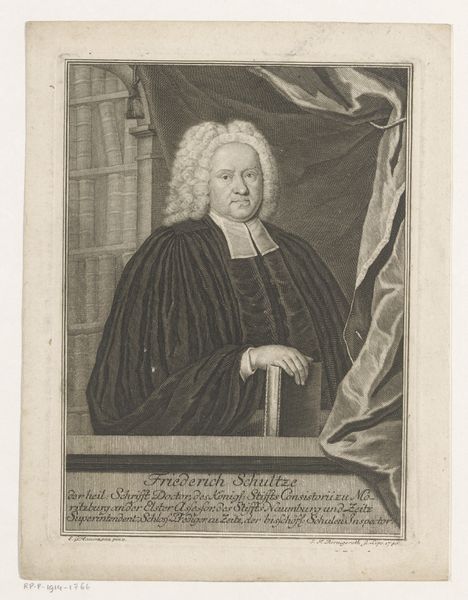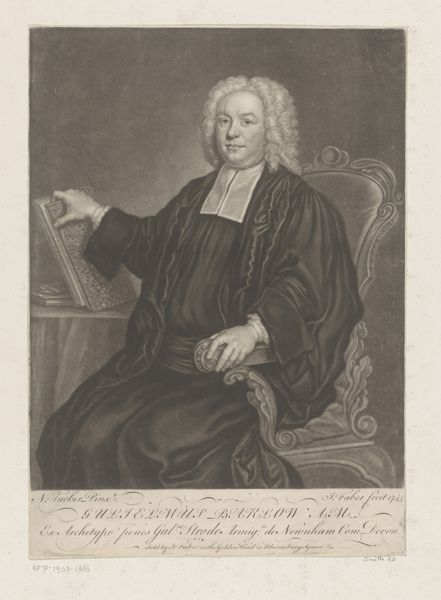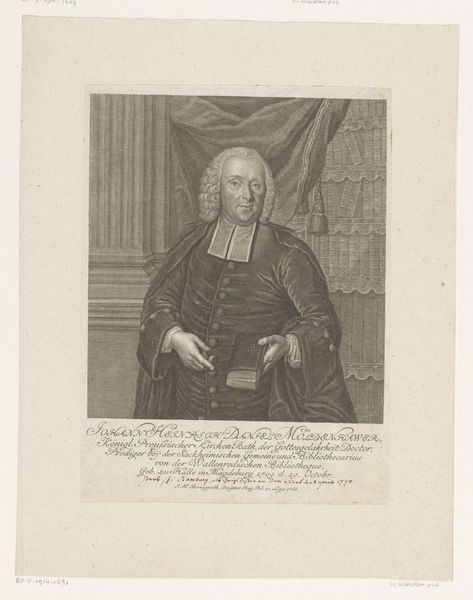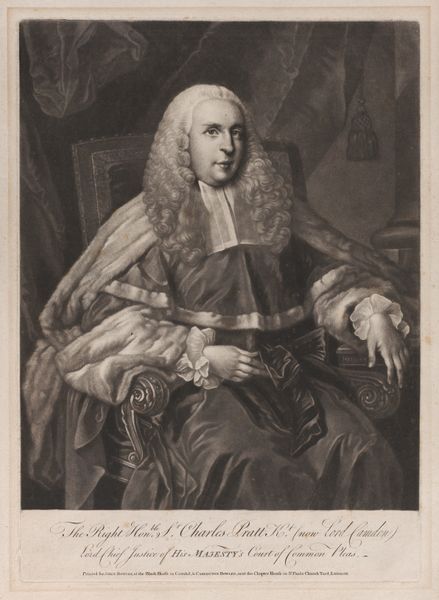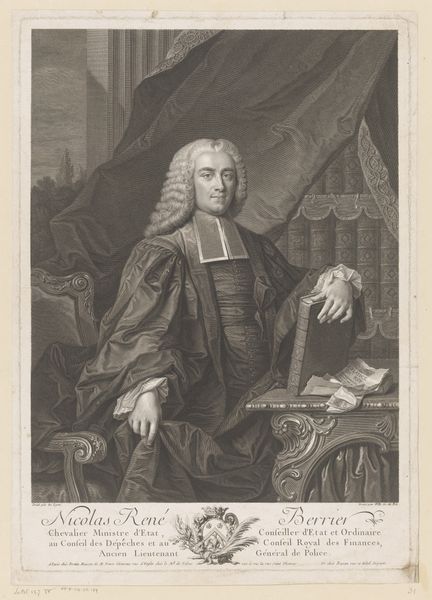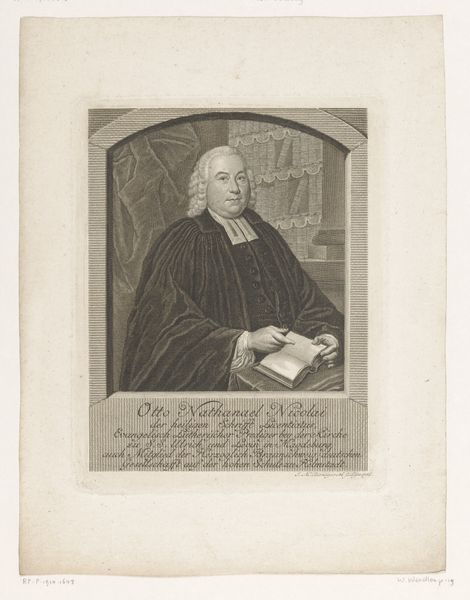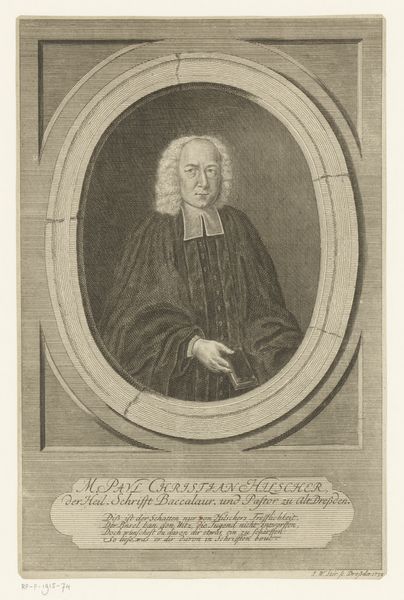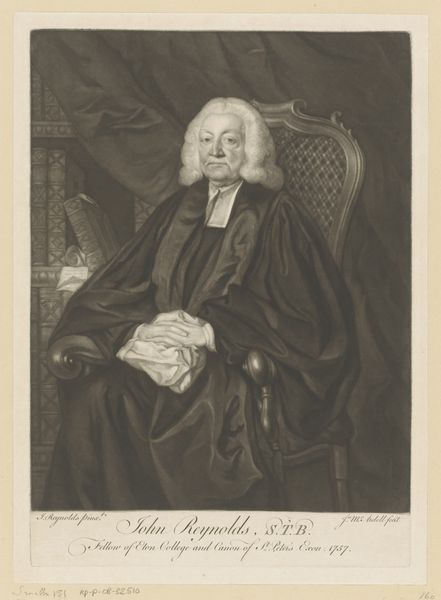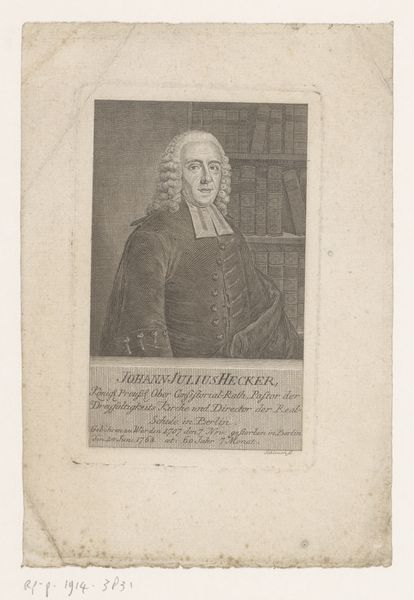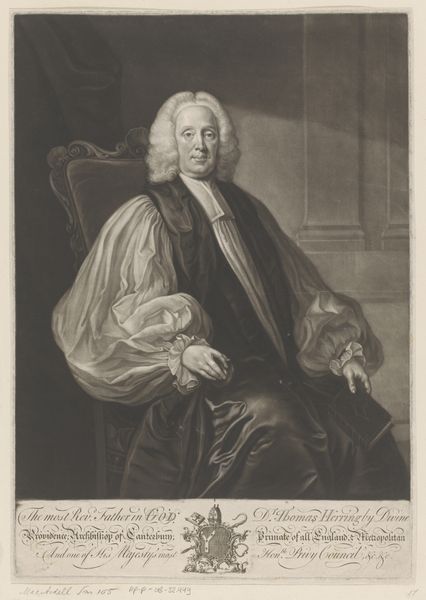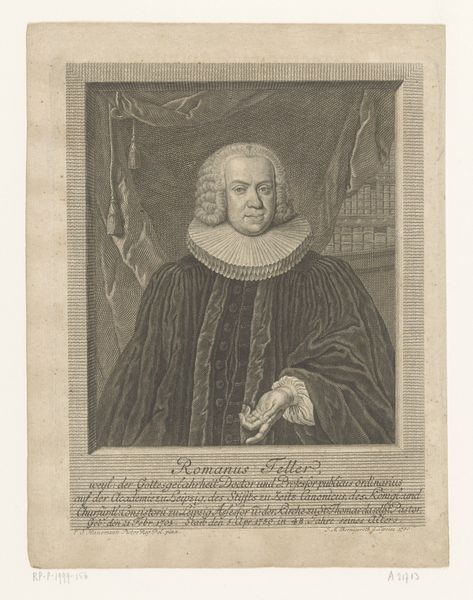
Portret van Hendrik Danielsz. Hooft, burgemeester van Amsterdam 1792 - 1813
0:00
0:00
nicoloschiavonetti
Rijksmuseum
print, engraving
#
portrait
#
neoclacissism
# print
#
historical photography
#
historical fashion
#
19th century
#
history-painting
#
academic-art
#
engraving
Dimensions: height 524 mm, width 413 mm
Copyright: Rijks Museum: Open Domain
Curator: Looking at this portrait, I am struck by how effectively the engraver, Nicolo Schiavonetti, captures a sense of established authority and subtle unease in the sitter’s expression. The portrait dates roughly from 1792 to 1813 and is currently housed here at the Rijksmuseum. Editor: Yes, it is immediately evocative! The cool colors and almost photographic realism contrasted with the man's melancholic air create an intriguing tension. You sense a powerful presence, but perhaps one burdened by something. The man in this image carries the weight of 19th century societal structure in his gesture. Curator: Indeed. This is a print depicting Hendrik Danielsz. Hooft, the mayor of Amsterdam. It reflects the neoclassical aesthetic prevalent at the time, aiming for a return to classical ideals of balance and order, visible even in the folds of the curtains behind him. Yet, portraits like this are always performances. Editor: Absolutely. It's a carefully constructed image of power, but the subtle details hint at the man beneath the official facade. His gaze doesn't meet ours; the book on the table might hold keys to past decision, there is even some kind of civic banner decorating the bottom, they speak volumes about his public role in society. I imagine this print would have functioned much like a photograph does today, as an exercise in establishing a public identity for its subject. Curator: And in a broader sense, the artistic choice to depict prominent figures, like Mayor Hooft here, served to immortalize and perhaps idealize specific values that the Dutch establishment wanted to promote during a politically charged period. These engravings are like time capsules that tell a more nuanced story about that period than some history books can convey. Editor: I agree. The very act of making this image accessible to a wider audience through print democratizes representation, but within the carefully prescribed visual language of the time. Seeing it today offers us insight into how authority was projected and consumed. Curator: It truly underlines how potent images can be in shaping our understanding of history. Every symbol, every carefully chosen element contributes to an orchestrated narrative of status, obligation, and, possibly, quiet desperation. Editor: Right. It reminds us to look closely, not just at who is being represented, but *how*, and for whose benefit. These artistic echoes still impact our public discourse today.
Comments
No comments
Be the first to comment and join the conversation on the ultimate creative platform.

